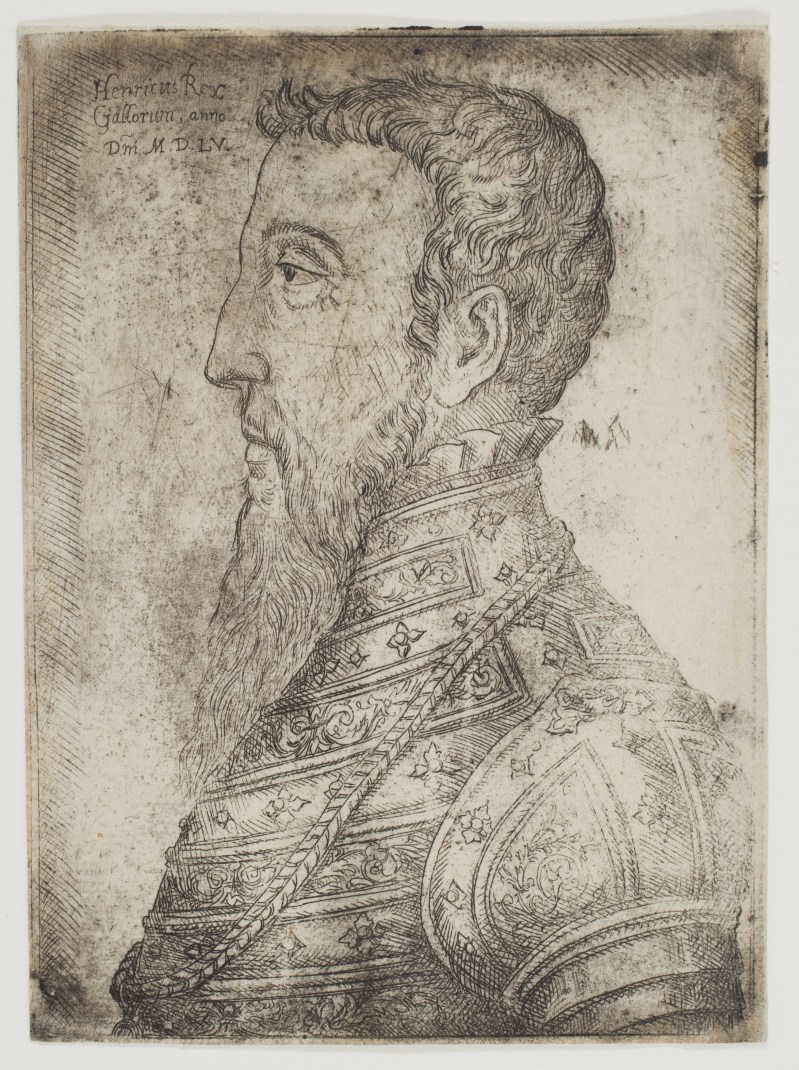Jan Cornelisz. VERMEYEN: Henry II, King of France - 1555
SOLD
Etching and engraving, 146 x 105 mm. Hollstein 9, Popham 11, Horn A120, Passavant 9, Wurzbach 3.
Impression printed on laid paper, trimmed to 1 mm outside the platemark at top and right, and on the platemark at left and bottom. Very good overall condition. Small remains of mounting paper on verso along right edge.
A very rare impression. Hollstein mentions only two impressions, one of which was destroyed during the Second World War (formerly kept in Berlin), the other now kept at the Rijksmuseum (RP-P-1910-2325) and reproduced in the catalogue. Hollstein also mentions the existence of a later impression, also in the Rijksmuseum (RP-P-1882-A-6307). This impression is printed on the well-wiped plate. Our impression, which has not yet been described, conforms to the impression RP-P-1910-2325 reproduced in the Hollstein catalogue, printed with surface tone.
The letter in the top left-hand corner identifies the model: Henricus Rex Gallorum, anno Dm̃ M.D.LV. (Henri, King of France, the year of our Lord 1555).
This profile of Henry II in armour is close to several other small portraits by Vermeyen, notably that of the condottiere Ferdinando I Gonzaga (1507-1557) (Hollstein 8) and in particular that of Philip II King of Spain (1527-1598) (Hollstein 13), which is of similar dimensions and bears the same date, 1555. The style is also very similar: the same use of parallel lines to shade the edges of the copperplate, and the same typography used for the engraved inscription Philippus Rex Anglorum, Princepsq[ue] Hispaniarum anno 1555. This typography can also be found on the tablet of the large plate of The Last Rites (Hollstein 2). The use of parallel lines and cross-hatching to define shadows and borders is typical of Vermeyen's style and can be found in many of his prints, for example the portrait of A Young Woman (Hollstein 15).
Vermeyen had engraved another portrait of Philip II in 1555, of which only one impression was known, which was unfortunately also destroyed during the Second World War (see Hollstein 12). It bore the inscription la figure de Phililipes (…) comme il entra la ville de Bruxelles, le VIII de September Lan MDLV [the figure of Philip (...) as he entered the city of Brussels, the VIII of September the year MDLV] with the signature Jo Maius fecit cũ Privilegio. Jan Cornelisz. Vermeyen, who lived in Brussels at the time, had been in the service of Charles V for many years. The latter abdicated in 1555 in favour of his son, Philip II. We can assume that these various engraved portraits of kings were made by Vermeyen in 1555 in order to reflect current events.
The rarity of Vermeyen's prints is emphasised by all his cataloguers.



